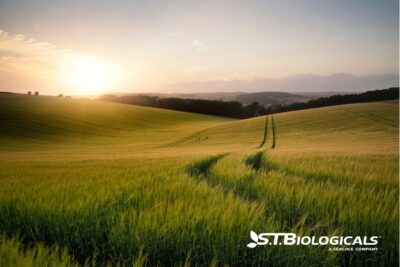We’ve had a fairly mild winter so far. How is that going to affect your planting plans? Overall, we’re experiencing drier-than-normal growing seasons, so inputs may mean more than spraying nutrients. Use the winter to optimize your input dollars come spring.
The Value of Cover Crops in Dry Years
Leaving your soil bare may mean early planting next spring, but you’ll also have fewer nutrients. This will be a good year to invest in cover crop seed to underseed your cash crop. Wait about 4 to 5 weeks after you’ve planted your corn, soybeans, wheat, cotton, or other cash crop to underseed.
If this is the first year you’ve used a cover crop with your cash crop, get advice from a crop consultant on which covers are best for your situation. You want your cover crops to attract beneficial insects and outcompete weeds but not outcompete your cash crop, so getting this right is important.
Soil Test Before Planting for Precision Input Management
Did you test your soil this fall? That’s a great set of data points going into 2025. Is your soil covered or bare this winter? Covered soil will build up nutrients and beneficial microbial populations, while bare soil will lose nutrients over the winter through wind and water erosion.
Whichever ag practices you’re using, it’s good to test your soil in the spring before planting so you know exactly what may be missing. Be sure to have micronutrients tested as well as NPK and pH.
A Haney Test also tests for microbial populations. When you let nature do more of the work for you, input costs are lower, and your actual work hours are less. But microbes don’t thrive in soil that is routinely tilled and sprayed with synthetic chemicals. Consider how your ag practices are impacting your natural allies. Work smarter, not harder.
Creating Nutrient Balance in Your Soil and Plants
Inputs alone don’t maintain an optimum soil nutrient balance. Microbes in the soil increase the efficiency of the nutrient cycle and optimize any nutrient inputs you apply. There are numerous forms of most nutrients. Some are more expensive than others. The most expensive form of nitrogen, for example, is anhydrous ammonia, followed by urea and the ammonium nitrates.
Which one is the most accessible to plants? Urea and UAN solutions are the most accessible to plants because they’re highly soluble. That also means if you don’t get it right, you lose a lot of nutrient application to leaching. As a nitrate, UAN contains salts that can accumulate in the soil over time.
You can use a less expensive form of nitrogen if you’ve got a strong microbial population in your fields. Their job is to enhance nutrient uptake for plants by storing it in their bodies until they die or are eaten by larger microorganisms. But an excess of any nutrient, macro or micro, will adversely affect microbial populations.
Three tips for maximizing your inputs this year: soil testing, cover crops, and minimizing nutrient inputs to maximize microbial populations. Naturally increasing the cycling of nutrients in your soil is the best way to maximize ROI and decrease costs.
The extended weather forecast looks promising for planting next spring. It also looks like a dry growing season for most of the US. Cover crops and beneficial microbes will make the difference between resilience and desiccation. For more information on cover crops and microbial activity for increased yield and nutrient content go to this blog.
We’re here to answer your questions. Give our team at ST Biologicals a call. We’re here to help you succeed. When soil speaks, we listen.

